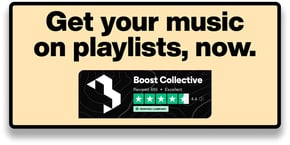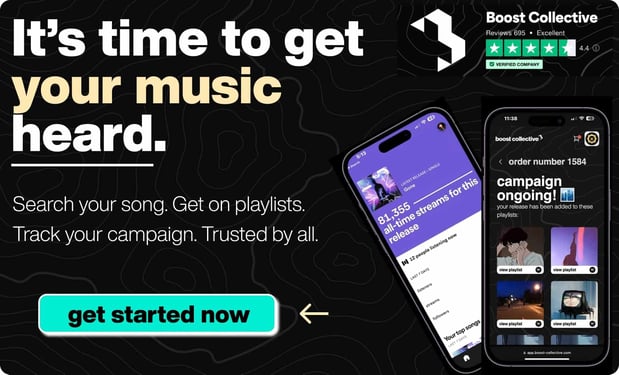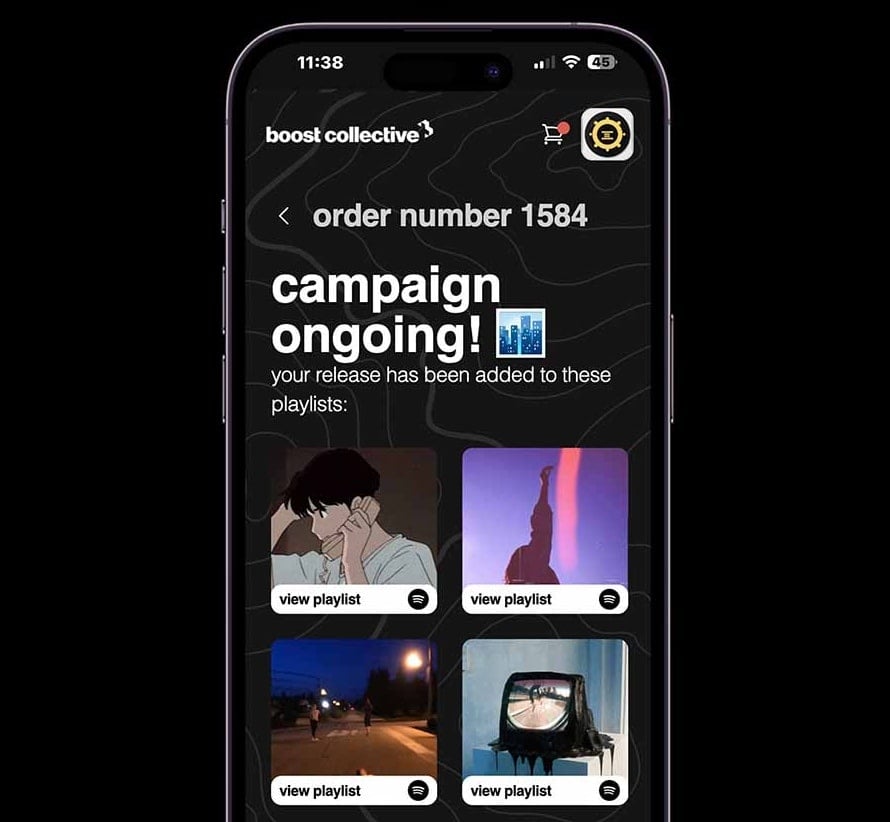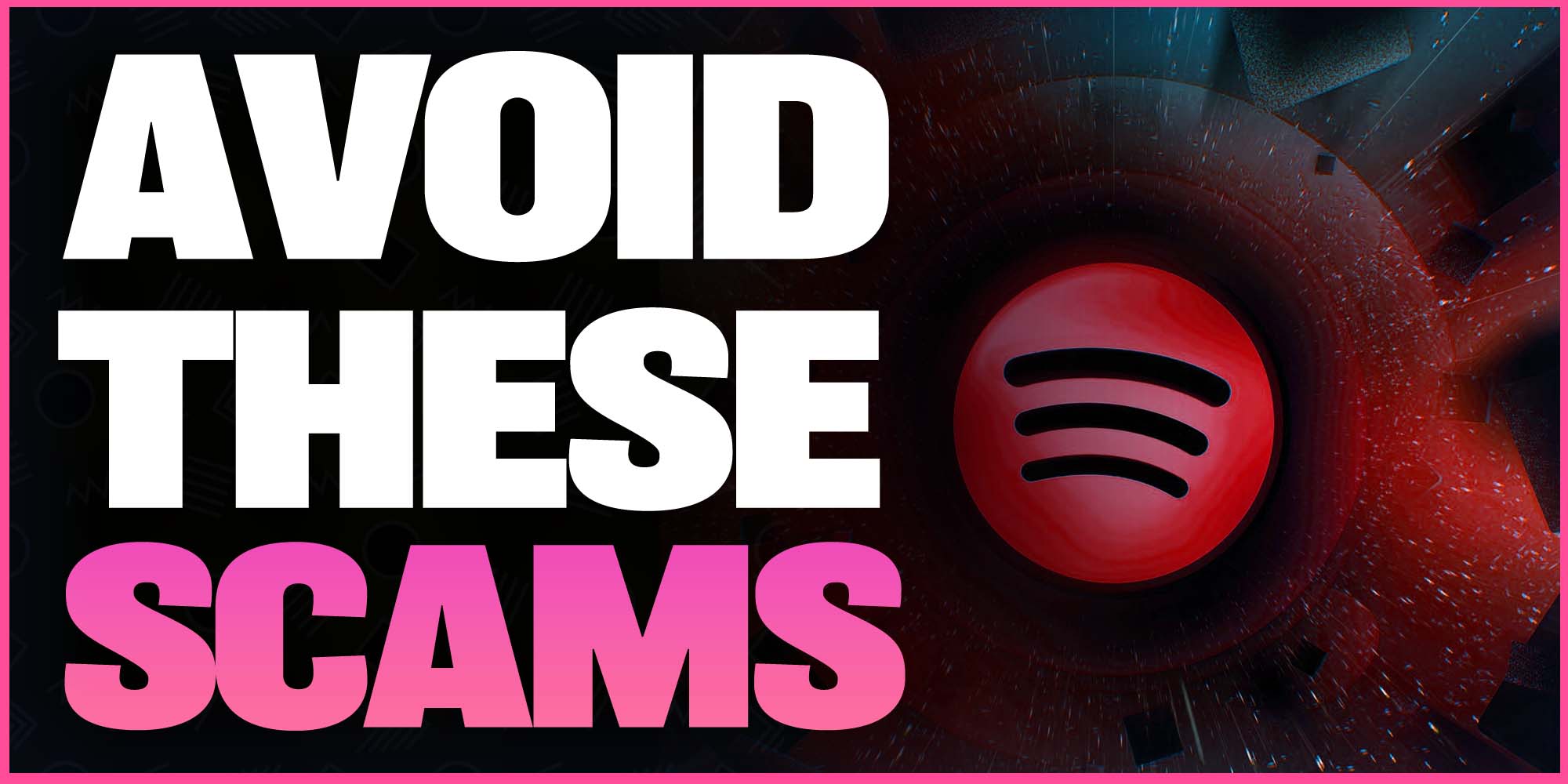
How to avoid fake spotify Playlist scams
Do you ever wonder how legit your playlist placements are? And what is a fake Spotify playlist?
If so you can find out now! It is not as complex as you might think.
The first tool you need is a website called Chartmetric.
My buddy referred this to me last year, and I never went back. With Chartmetric you can monitor a playlist and its growth.
Best part? It is 100% free to sign up and use.
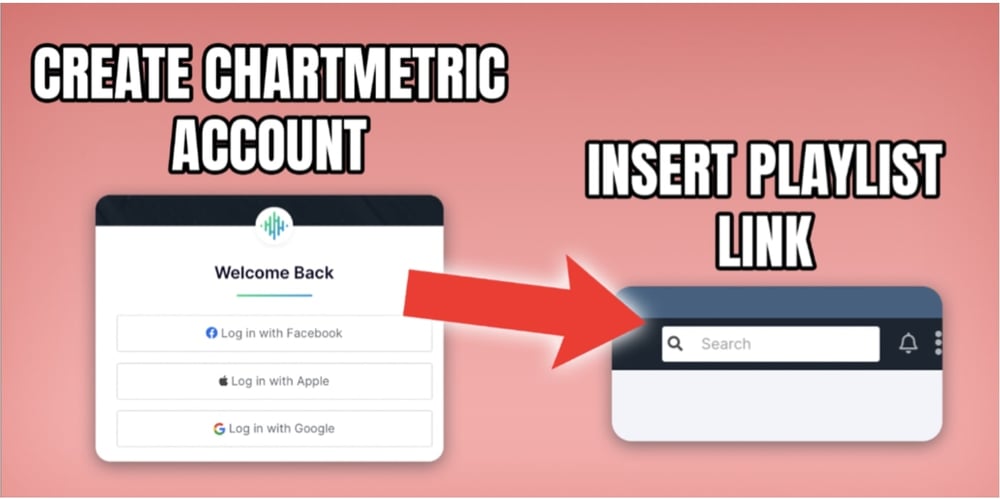
Don't miss out: here are the 15 BEST Spotify promotion methods!
So all you need to do is create an account, from there you can input the playlist you’re auditioning then boom!
The playlist growth chart is presented to you.
Want to get your music on active & relevant playlists that actually get results?
Get your music heard now 👇
The Chartmetric data comes straight from Spotify’s meta-data.
(It was built using Spotify for developers tools)
So you can trust Chartmetric’s techies are providing accurate numbers.
Hell yeah, data rules!
Without chart metric, you’re walking into playlist promotion blind.
This is a fatal but common mistake millions of artists make when promoting music.
You don’t want to be one!
Bonus: Check out Boost Collective's free Spotify promotion here - our free-to-use platform is a must-join for all independent artists!
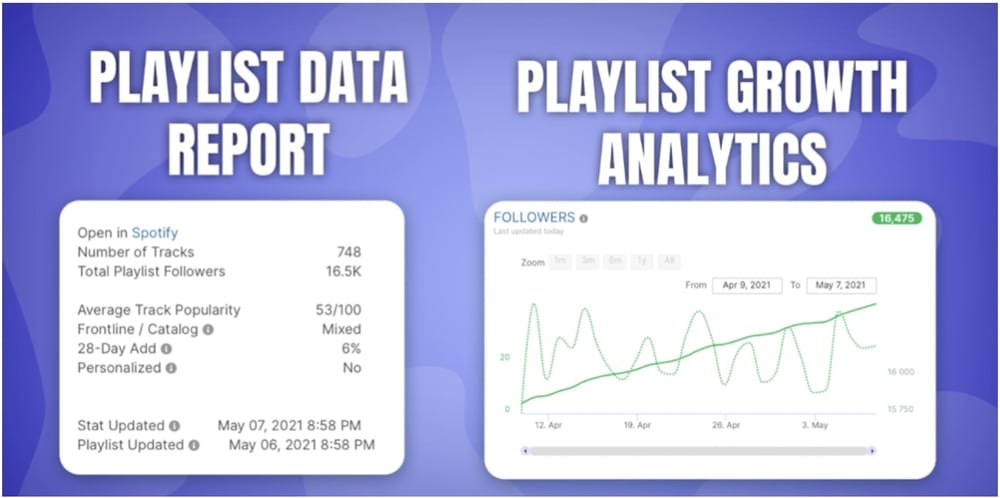
As you can see, the image above contains two screenshots I took from Chartmetric.
The left has a written playlist data report, you can get all the valuable info in a quick read.
On the right, you can see the playlist growth over time.
You want growth to look like a straight line.
If the playlist growth is smooth it means that the growth is consistent, proof that it is grown organically.
On the flip side, If the playlist has sudden spikes and dips then I would stay away.
The image below highlights an example of “sus” playlist growth:
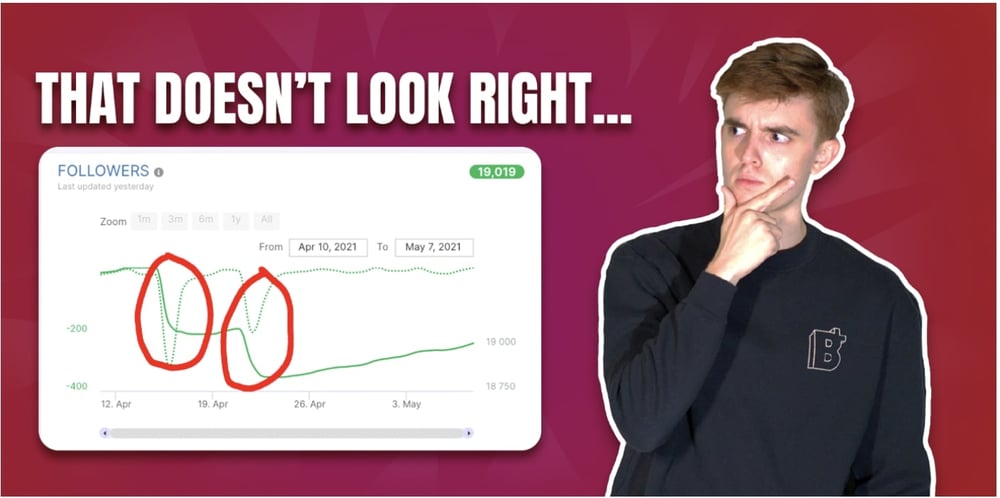
The sudden dips mean that Spotify is purging the playlists of accounts following them!
This can happen every few years (Spotify is notorious for accidentally deleting playlists, followers, etc.)
That said, if it’s hundreds or even thousands in 48 hours then I advise you to stay away!
My radar is ringing.
Here is something to consider: sometimes curators get shout-outs from large channels.
Example: if you reached out to Worldstar and they promoted your playlist on their story, that can explain your sudden increase in following.
(I recently got an influencer campaign, which led to a large increase on our Playlist within a 3 day span.)
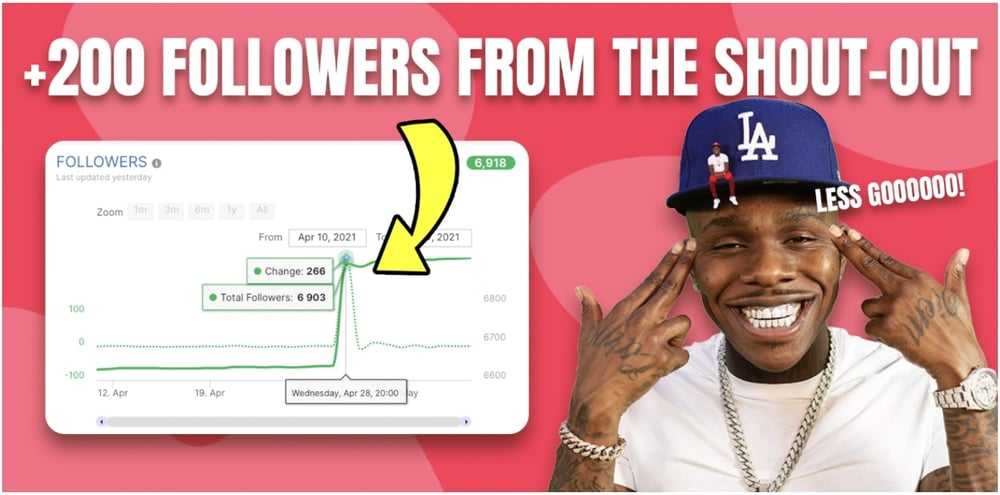
“Makes sense, but how can I tell whether the playlists grew through successful campaigns or bots?”
A closed mouth is never fed. Just ask them!
Do your due diligence to ensure that they provide sensible explanations behind the playlist growth.
Almost every curator grows with the use of social media ads, so you can ask them if it’s paid ads or content-based ads.
Looking for an ORGANIC Spotify promotion? Tap below. 👇
Spotify Botting: How it works
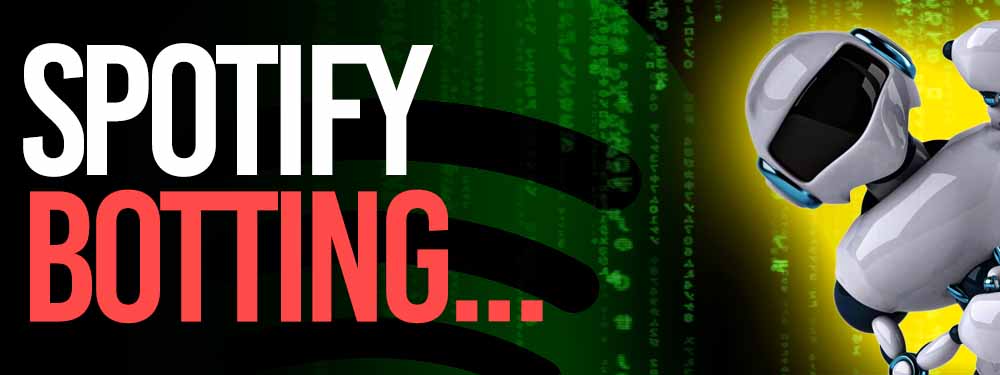
These fake users then stream a Spotify song up to 31 seconds just to reach the stream threshold for it to count within Spotify's system. The artist that gets Spotify botted probably doesn't even realize it, unless they know what to look for.
Spotify stream bots are very common and very easy to fall for.
The way Spotify botting works is by running virtual servers that create fake Spotify user clients.
These bot farms can run thousands of computations at a time...
So it's really easy for them to apply fake streams to many tracks at once.
It's kind of genius, however, it is a horrific way to go as a music artist.
organic vs fake Spotify playlists: Location
The world is a lot more globally connected than it used to be, you are bound to get both a local and international fanbase when promoting.
Yes, listener location matters, but it also doesn’t.
This is one easy way to spot fake Spotify plays.
Listeners can be an indication of a playlist's authenticity but this is not all the case.
Example: Many European/American curators make playlists that end up growing a lot in many other countries as well.
This does not mean that the followers are bots, our world is just that hyper-connected for better or worse.
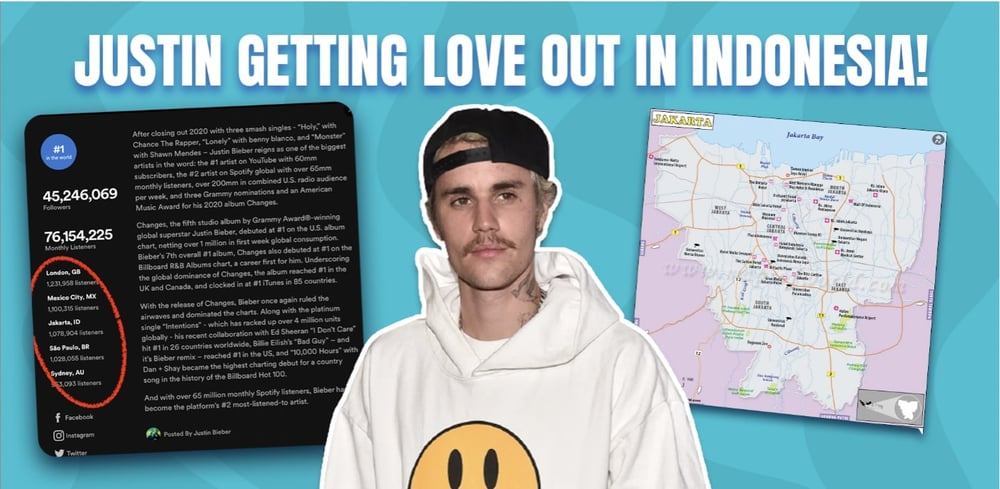
The trick is to look for the PROPORTION of streams coming from certain locations.
If you’re getting over 50% of your streams from any given location then something isn’t right...
It isn’t practical for a fake-playlister to reprogram their botting servers to different locations when giving you fake plays, so this is a good indication that bots are at play here.
Bonus: Check out Boost Collective's free Spotify promotion here - our free-to-use platform is a must-join for all independent artists!
Depending on your marketing needs, you can always opt-in to submit to genre-specific playlists.
For example, if you live in Toronto (the team that wrote this blog is Canadian 🇨🇦) you can just submit to area-specific playlists.
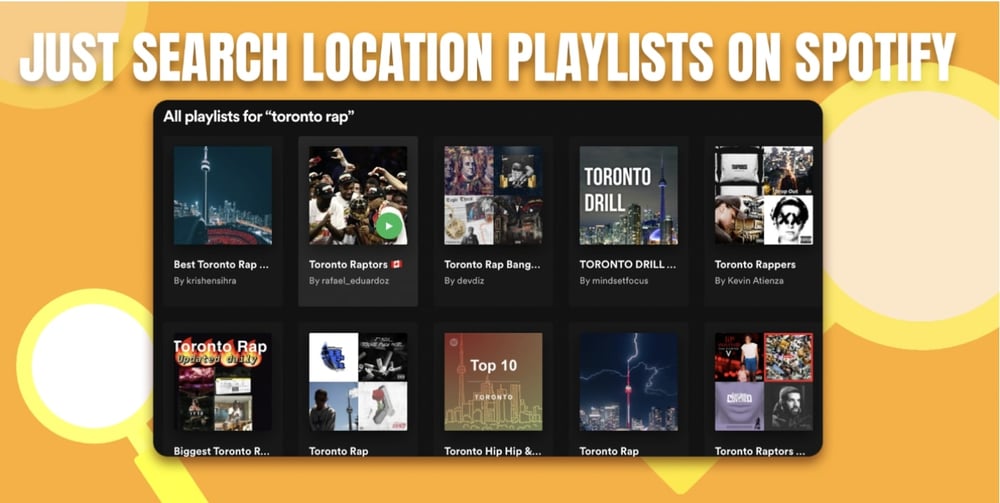
You can find these by searching them on Spotify.
Since you are not using a Music Marketing Agency then you have nobody to manage the campaign but at least you can lock in the listener locations.
Keep in mind that the smaller the location, the smaller the overall exposure will be.
As for engagement of organic playlists, that is not correlated to location.
Bonus: Download the 3000+ Spotify Playlist curator contact list for FREE! 👇
Organic Spotify streams vs fake
You should only expect results in proportion to the playlist size.
This is called the capitalization rate - cap rate for short.
If a playlist has 50k followers then 500-5000 is the expectation (1 -10% of the playlist size.)
You may not like these numbers because they seem small, so let me help unpack these figures for you.
Here are red flags that signal fake Spotify plays:
- The playlist has other songs the listener listens to
- Listeners don’t listen to every song on a playlist
- Your song can be skipped
- Listeners don’t listen to every follower's playlist daily
A 1-10% cap rate from a playlist is expected.
This is because there are many other songs, so you’re competing for listener real estate!
“Why don’t curators lessen the amount of songs then?”
It needs to be this way because a 5 song playlist doesn’t attract listeners. The most common playlist size is 80-200 songs.
Some smaller but highly targeted playlists can get you exponentially large results.
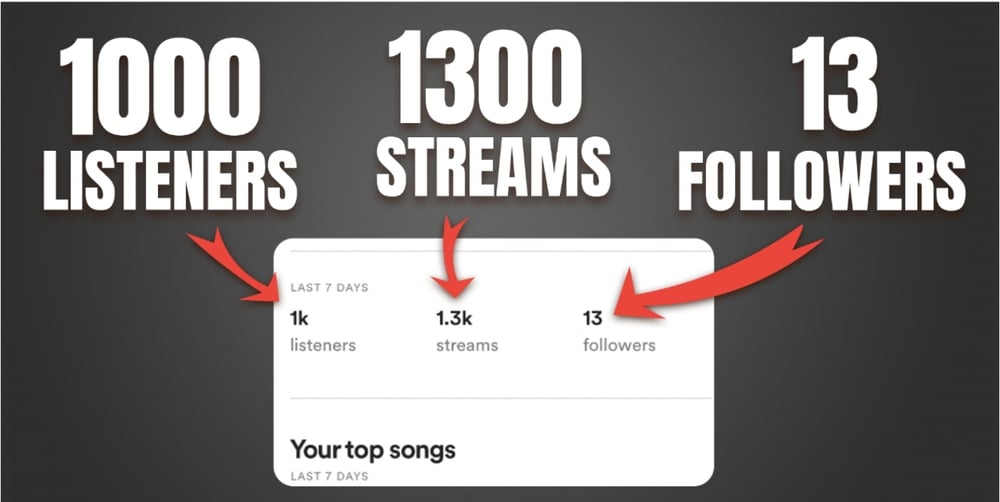
Above, the artist (one of my friends) got on a playlist and these are her results after a few days.
Her song got 1,000 listeners and 1,300 streams.
This means that around 30% of listeners went ahead and listened a second time.
This is great!
This is a healthy indication that these are not rotted plays.
Each song is different and performs differently, so treat this as a benchmark but common sense is the best indicator of expected results as well.
Here's the result from one of our playlists:
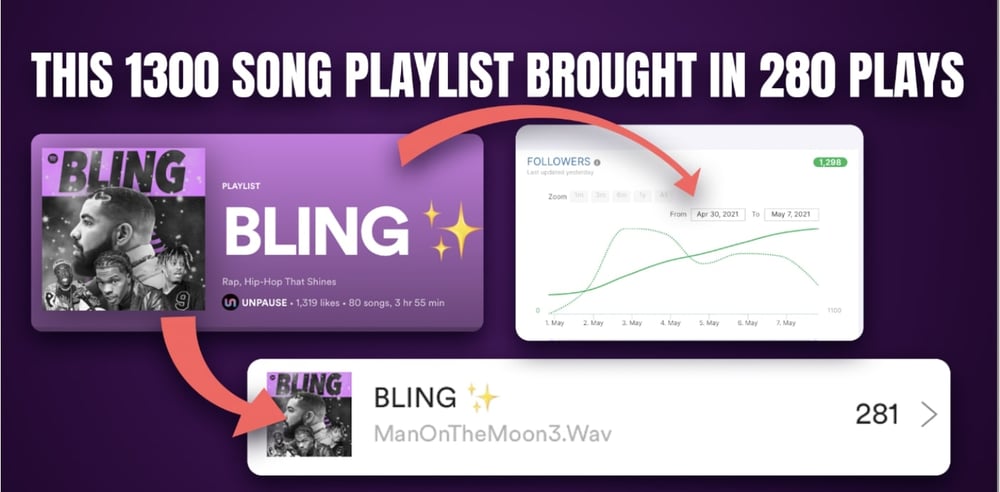
As you can see, they are not bad.
Our artist buddy whom we ran the campaign sent us this screenshot (the song was placed for 2 weeks.)
And that's it! I hope you enjoyed this Spotify promotion guide.
Get your music on playlists now.
It’s time you get your exposure and listeners up - playlisting by Boost Collective has been trusted by 50,000+ artists worldwide.
It’s easy: Search your song, get on playlists, and track your campaign.
What’re you waiting for? Tap in - and get added to playlists in 24 hours.
Join Boost Collective for free here.
